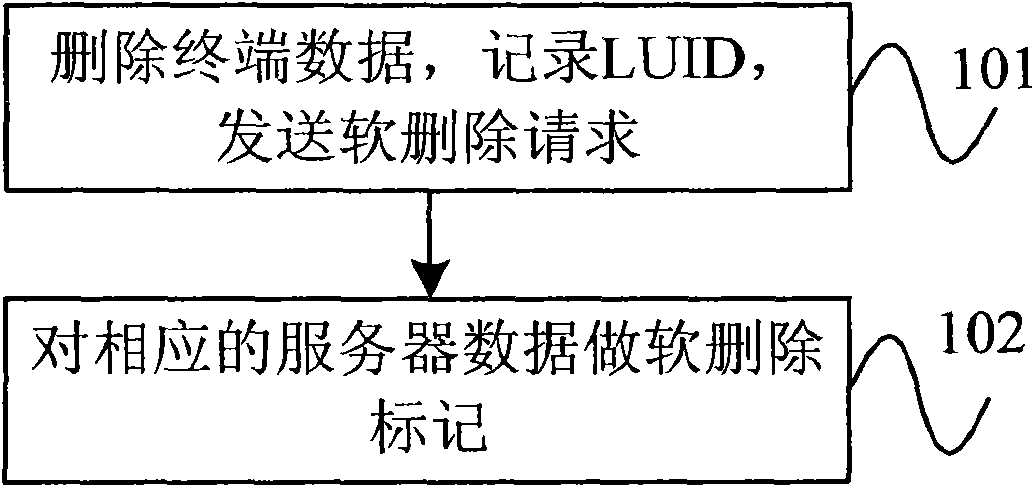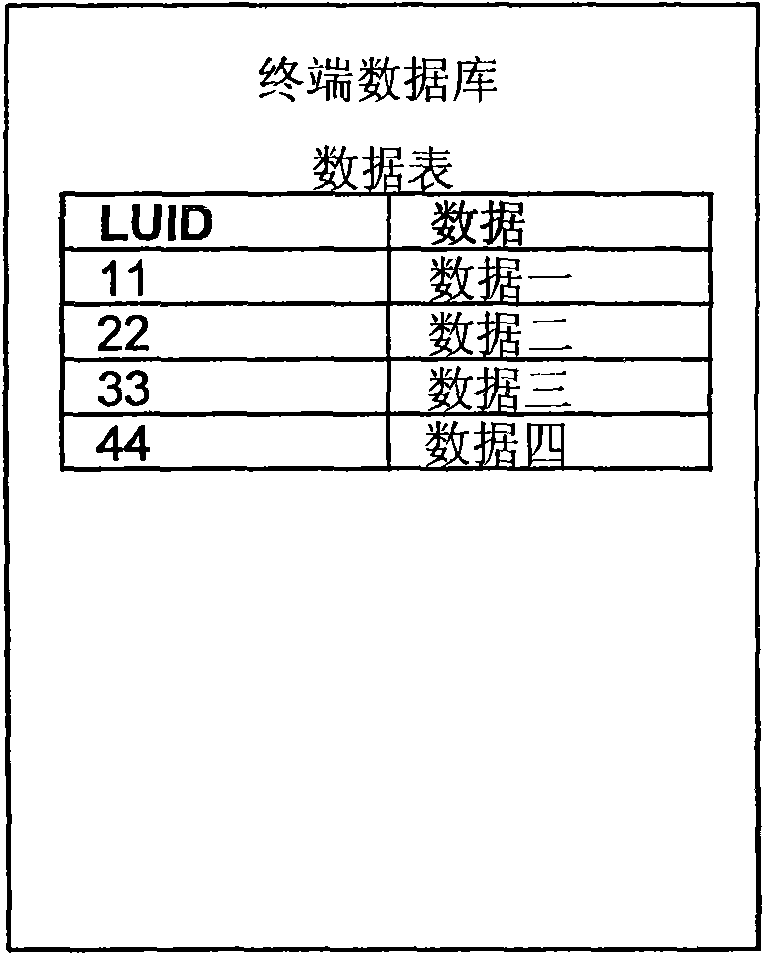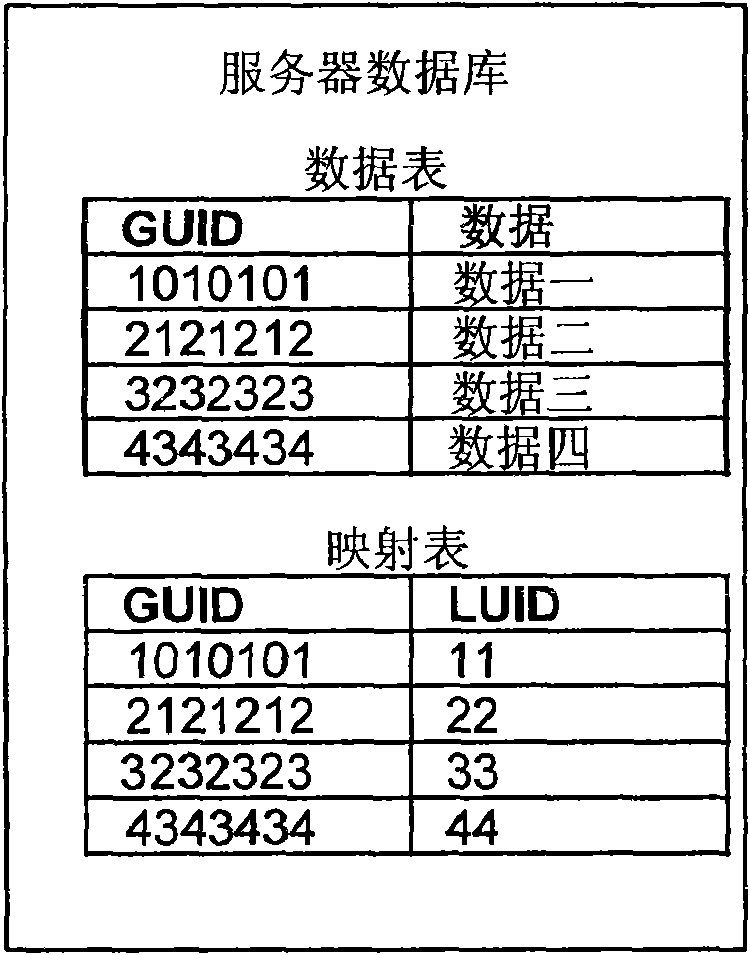Methods for data soft deletion, data recovery and data synchronization, terminal and system
A recovery method and data synchronization technology, applied in the transmission system, electrical components, etc., can solve the problems of data management confusion, non-recording, and affecting the normal operation of the terminal, so as to ensure normal operation and avoid management chaos.
- Summary
- Abstract
- Description
- Claims
- Application Information
AI Technical Summary
Problems solved by technology
Method used
Image
Examples
Embodiment 1
[0039] This embodiment provides a method for soft deletion of data. This embodiment takes the terminal's active soft deletion of data as an example for description. figure 1 As shown, including the following steps:
[0040] Step 101: After deleting the terminal data to be soft deleted, the terminal retains the LUID of the deleted terminal data, and carries the LUID in the soft delete request and sends it to the server.
[0041] Among them, terminal data refers to data stored in the terminal. If eXtensible Markup Language (eXtensible Markup Language, referred to as: XML) is used for writing, this step can be implemented as follows:
[0042]
[0043]
[0044] 3456
[0045]
[0046]
[0047] . / 11
[0048]
[0049]
[0050]
[0051] Step 102: After receiving the soft delete request, the server finds the corresponding server data according to the LUID carried therein, and marks the found server data for soft deletion, so that the data is soft deleted.
[00...
Embodiment 2
[0055] This embodiment provides another data soft deletion method. In this embodiment, the server takes the initiative to soft delete data as an example for description. image 3 As shown, including the following steps:
[0056] Step 201: The server marks the server data to be deleted for soft deletion, and sends a soft deletion command to the terminal. The soft delete command carries the LUID of the server data with the soft delete mark on the terminal. The specific XML code is as follows:
[0057]
[0058]
[0059] 3456
[0060]
[0061]
[0062] . / 11
[0063]
[0064]
[0065]
[0066] Step 202: After receiving the soft delete command, the terminal searches for the corresponding terminal data according to the LUID therein, deletes the found terminal data, and retains the LUID of the terminal data;
[0067] According to the method described in this embodiment, for the server actively soft-deleting data, since the server marks the soft-delete...
Embodiment 3
[0069] In the foregoing method embodiments 1 and 2, the terminal needs to retain the LUID of the soft deleted data. However, this embodiment provides a data soft deletion method that is implemented under the condition that the terminal does not retain the LUID of the soft deleted data, such as Figure 4 Shown includes the following steps:
[0070] Step 301: After the terminal deletes the terminal data, the LUID of the deleted terminal data is carried in the soft delete request and sent to the server. However, unlike step 101, the terminal does not record the LUID.
[0071]Step 302: After receiving the soft delete request, the server finds the corresponding server data according to the LUID carried therein, and marks the server data as soft delete, so that the server data is soft deleted.
[0072] Specifically, the server may first find the corresponding GUID in the mapping table stored in the server database according to the LUID; and then find the corresponding server data in the...
PUM
 Login to View More
Login to View More Abstract
Description
Claims
Application Information
 Login to View More
Login to View More - R&D
- Intellectual Property
- Life Sciences
- Materials
- Tech Scout
- Unparalleled Data Quality
- Higher Quality Content
- 60% Fewer Hallucinations
Browse by: Latest US Patents, China's latest patents, Technical Efficacy Thesaurus, Application Domain, Technology Topic, Popular Technical Reports.
© 2025 PatSnap. All rights reserved.Legal|Privacy policy|Modern Slavery Act Transparency Statement|Sitemap|About US| Contact US: help@patsnap.com



